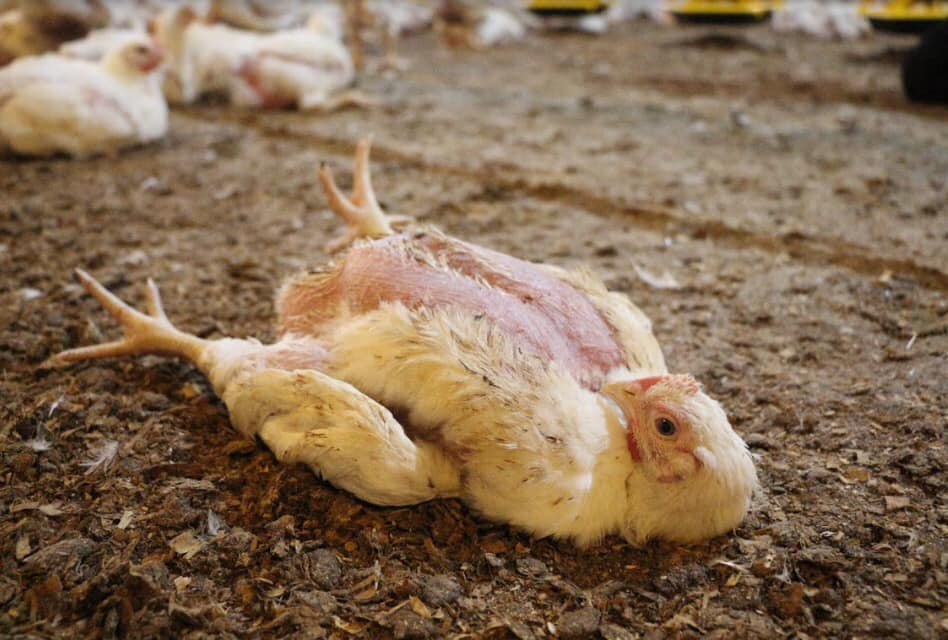‘Ahimsa’ – a moral guide for our coexistence with other animals
Posted on October 5, 2020

In this article, End Animal Slaughter’s Sandra Kyle states that while morality isn’t always clear cut, applying the concept of ‘ahimsa’ to our treatment of other animals shows the extent of our wrongs against them.
In a couple of weeks the people of New Zealand will be presented with a referendum on ‘The End of Life Choice Bill’, which will make it legal for a terminally ill person to request assisted dying.
While early polling reflects that the ‘Euthanasia Bill’ may pass into Law, many people, including some members of the medical establishment, have come out against it. As I was trying to decide how I would vote, I found myself reflecting on the nature of ‘good’ and ‘evil’.
Unfortunately, it is not possible to establish good and bad scientifically, because even scientists must use their judgement, which is based not entirely on pure reasoning, but on applying value principles that involve their own beliefs. Neither are concepts of good and bad universal. A traditional vendetta in Armenia, for example, is if your male relative commits a murder then the family of the victim will kill a male relative of the murderer in retaliation. This has led to many young men forgoing their education and normal life, and going into hiding. And in many parts of the world, including some US states, it is legal to execute someone who has taken the life of someone else. So we cannot look to objective answers for good and bad, which is in the domain of morality. But moral questions are not easy to quantify, as they can differ from culture to culture, and are constantly evolving.
Moral questions are not easy to quantify, as they can differ from culture to culture, and are constantly evolving.
Not so long ago keeping humans as slaves, subjugating women, and treating homosexuals as criminals were part of the prevalent morality and ethics in western societies. The improvement in potential and well-being of a majority of human beings seems to indicate that the evolution of morality is a good thing. However, there does not seem to be a real objective, universal, way of deciding whether something is ‘right’ or ‘wrong’ .
If you take the viewpoint that it is ‘intention’ and ‘usage’ that makes something good and bad, then this also poses dilemmas. While, for example, certain chemical substances can kill a person, or (in the case of chemotherapy) prolong their lives, this isn’t helpful in the euthanasia debate, for example. Both sides of the argument are seeking to promote the common good, and both sides believe that theirs is the superior moral action.
Religious scriptures tell us what is right and wrong but there are problems here too. The Ten Commandments forbids us to take the name of the Lord Thy God in vain, which I have noticed is problematic for a huge number of people on social media! The concept of Karma tells us that a good action will yield good results and a bad action will product bad results, but the proof in the pudding only shows up later, sometimes lifetimes later, and this is not very helpful in making decisions that have not yet had a chance to yield their fruits.
One moral concept that I have found very useful personally is the principle of ‘ahimsa’, or harmlessness, a spiritual doctrine shared by Hinduism, Buddhism and Jainism. It implies the total avoidance of harming of any kind of living creatures not only in deed, but also in word and thought. Yet even the concept of ahimsa did not make it clear cut for me when looking at the reasons put forward on both sides of the euthanasia debate.
‘Ahimsa’ implies the total avoidance of harming any kind of living creatures not only in deed, but also in word and thought.
There is one area where the principle of ahimsa is manifestly clear, however, and that is in our treatment of other animals. The fate of animals farmed for food is in my opinion the most pressing moral question of our time, both in terms of the numbers involved – into the trillions when you factor in fish – and the extent of the harm carried out to them. Our food system involves tens of billions of sentient beings, each with complex sensations and emotions, who are treated as commodities to produce flesh, eggs and milk for maximum profit. All these animals undoubtedly suffer, but the billions of animals who live on factory farms undergo the deepest levels of suffering imaginable for our food.
While it took a while for me to come to my standpoint on Euthanasia – I will be voting ‘Yes’ in the referendum – and while I still struggle with ahimsa in all its nuances, I have never had a second’s doubt that what we are doing to animals is a stupendous moral injustice. That it is legally perpetrated against the most helpless and innocent, that it is so widespread in the 21st century, is a shame and deep disgrace, and it must be brought to a halt. Fortunately, this particular dilemma has an easy, objective solution. All it requires is for individuals to become vegan.
Get information and support for going vegan here
 Sandra Kyle started the website End Animal Slaughter in 2018 with the goal of ending animal slaughter by 2025
Sandra Kyle started the website End Animal Slaughter in 2018 with the goal of ending animal slaughter by 2025

